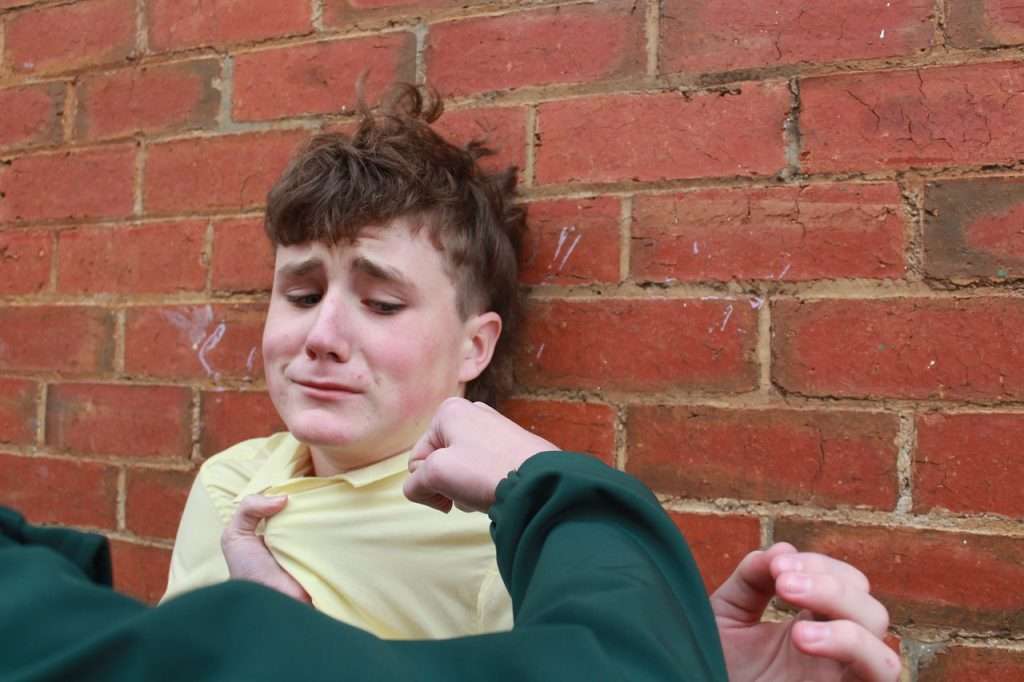
Think back to when you were a teenager in high school, about a club or a team that you had been a part of with your good friends – friends who you trusted you could count on through thick and thin, friends you considered your sisters. Now, imagine that you were deathly allergic to peanuts – and these teammates, friends, and sisters were undoubtedly aware of this fact.
One fine day before practice, you went to your locker to retrieve your uniform. You dialed right, left, and right on your combination lock. The locker door swung open, and a few dozen peanuts spilled out from where your uniform was hanging onto your hands and arms. Peanuts were everywhere – all over your locker, all over your uniform, and even in your shoes.
What would you make of it?
Well, imagine no more. This is something that exactly happened to a real-life teenager. A varsity football player in Texas. And it was done to him by his teammates. His chosen bros. What’s more, the school district said what happened wasn’t bullying, because “the legal elements of bullying were not met”. The Texas Education Code defines bullying as “an act or pattern of acts that physically harms a student or materially disrupts the educational process.”
I, for one, agree that it wasn’t bullying. It wasn’t JUST bullying. It was attempted murder.
In the U.S., more than 1 in 3 children with food allergies is bullied. Let that sink in. Absolutely no one should condone picking on someone with food allergies – adults or children. As an allergy parent, this shakes me to the core. It again reinforces why we persist with food allergy treatments with our trusted allergist and immunologist, Dr. Sanjeev Jain.
For those of you whose allergy and/or asthmatic children are a bit older and are not scared of needles, you may have heard that the FDA recently approved Xolair, an injected drug that acts as a catalyst for oral immunotherapy (OIT) treatments. According to Dr. Jain, who has been utilizing Xolair for the last 15 years to reduce the risk of anaphylaxis while a child is undergoing OIT, allergists have known about the utility of Xolair in reducing allergic reactivity, and mitigating the risk of anaphylaxis when exposed to an allergen for the last 20 years.
The other application of Xolair has been in helping a child make progress with OIT when the process is taking much longer than expected due to repeated mild reactions to OIT dose escalation.
So far, the utility of Xolair has been limited because not everyone undergoing OIT could get insurance approval for Xolair; we have to provide documentation that the child has severe asthma, or has severe and chronic hives which are not controlled by antihistamines alone. A few families have opted to pay out of pocket to receive this very expensive medication.
The recent approval of Xolair by the FDA to treat kids with food allergies to reduce the risk of anaphylaxis from accidental exposure has opened up our options.
To find out more about life-changing allergy treatments and Xolair, please book an appointment with Dr. Jain at Columbia Allergy.
The information on this website is not intended or implied to be a substitute for professional medical advice, diagnosis, or treatment. All content, including text, graphics, images, and information, contained on or available through this website is for general information purposes only. Always seek the advice of your physician or other qualified health care provider with any questions you may have regarding a medical condition or treatment and before undertaking a new health care regimen. Never disregard professional medical advice or delay in seeking it because of something you have read on this website.



















